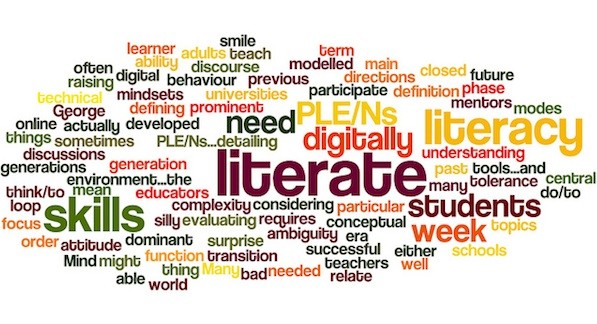dmlcentral.net
Why Teach?
There are as many reasons to teach as there are reasons to learn. One reason item-response testing (the twentieth-century’s dominant method of testing) is so deficient is that it tends to reduce what we teach to content (especially in the human, social, and natural sciences) or calculation (in the computational sciences). Think of the myriad ways of knowing, making, playing, imagining, and thinking that are not encompassed by content or calculation. This semester, I’ve moved over to highly experimental, collaborative, peer-led methods in my two undergraduate classes, “This Is Your Brain on the Internet," comprised largely of students in the natural and social sciences, and “Twenty-First Century Literacies," made up mostly of students in the humanities, arts, and social sciences.… more
Connected They Write: The Lure of Writing on the Web
The massive adoption of digital media in the everyday life of teens has reshaped social and educational practices in Latin America. A digital divide persists but youth are increasingly more connected. In Chile, for example, more than 96 percent of all students have Internet access. In Brazil, almost 80 percent of the population between 16 and 24 years and almost 70 percent of those aged 10 to 15 accessed the Internet in 2009. With that kind of penetration, digital media is creating new ways to understand literacy, learning, reading, and especially, writing. Far from hurting the writing practices for youth, digital media seems to be creating a far more complex and compelling space for them to flourish.… more
Teaching Digital Literacy
In literate societies, the idea of teaching someone how to read but not how to write is practically inconceivable. The dual connection between reading and writing is built into the very notion of literacy, making it a challenge to understand how someone could possibly do one without the other. It is safe to say that being able to use a medium as well as understand the processes of creation in that medium are the dual foundations of literacy in all media. This is the premise underlying the argument of media scholar Douglas Rushkoff's new book, Program or Be Programmed: Ten Commands for a Digital Age. In it, he contends that we have produced a generation of digital illiterates who understand how to use technology but not how the software that runs the technology they use is programmed. As he puts it, "We teach kids how to use software to write, but not how to write software" (p. 13). Those who fail to do this run the risk of being "programmed" by that software, not understanding how the decisions made by programmers "work on us" (p. 13), or affect our decisions while we use that software.… more


